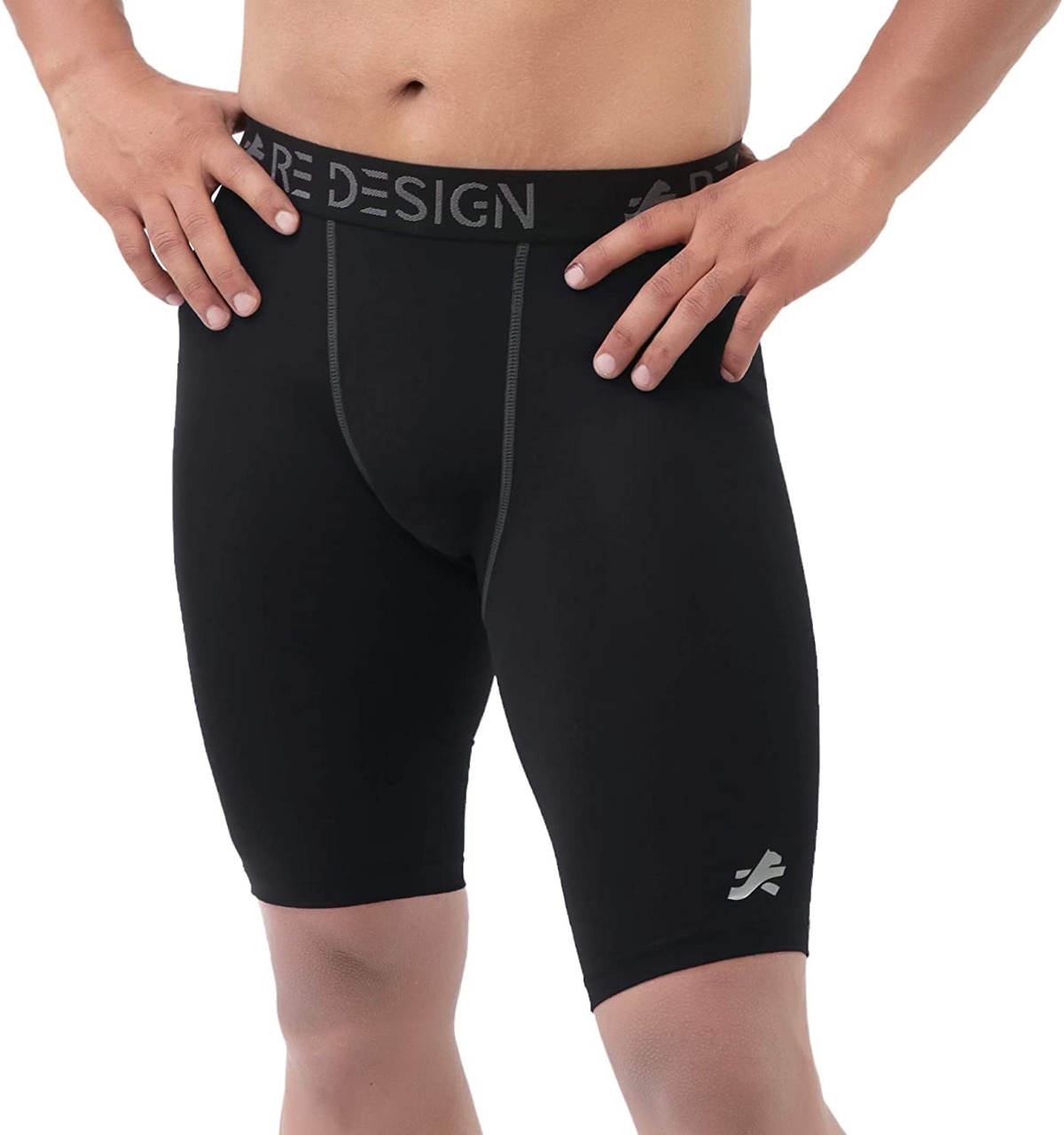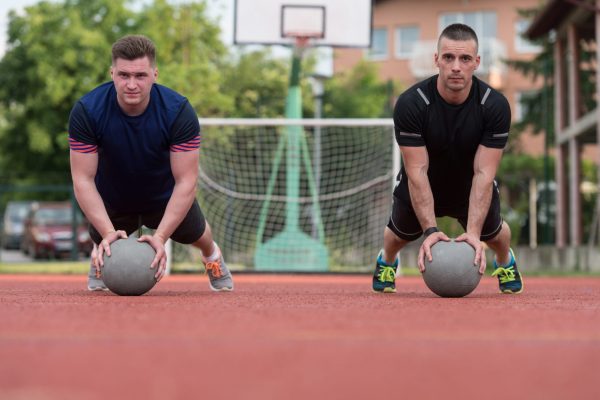

Featured
Why Is My Running Form So Bad
Modified: August 21, 2023
Discover the reasons why your running form may be subpar and learn valuable tips and techniques to improve it. Join our featured experts as they share their insights and help you enhance your running performance.
Introduction
Welcome to the world of running! Whether you’re a seasoned marathoner or just starting out, one thing that many runners struggle with is their running form. It’s not uncommon to feel like your form is holding you back or causing discomfort during your runs. But worry not, because we’re here to help you understand why your running form may be lacking and how you can improve it.
Running form refers to the technique and posture used while running. It plays a crucial role in efficient and injury-free running. When done correctly, proper form helps to optimize energy expenditure and reduce stress on your body. On the other hand, poor form can lead to inefficiencies, increased risk of injuries, and hindered performance.
There are several common mistakes that runners often make when it comes to their form. These include overstriding, heel striking, slouching or poor posture, lack of arm swing, and inefficient foot placement. Understanding these mistakes and their impact on your running can help you identify areas for improvement.
In this article, we will delve into each of these form mistakes and provide you with practical remedies to help you improve your running form. By implementing these tips and incorporating them into your training, you’ll be well on your way to running with a smoother and more efficient stride.
Understanding Running Form
Before we dive into the common mistakes and remedies for improving your running form, it’s important to have a basic understanding of what constitutes good form. Running form encompasses several key components that work together to create a smooth and efficient stride.
One essential aspect of proper running form is maintaining good posture. This means keeping your body upright, with your head aligned with your spine, and your shoulders relaxed. A strong core is also crucial for stability and efficient movement while running.
Another vital element of running form is the way your feet strike the ground. Ideally, your foot should land underneath your body, with a midfoot or forefoot strike. This helps to absorb shock and propel you forward with each step.
Arm movement plays a significant role in running form as well. Your arms should swing naturally at your sides, with a slight bend at the elbows. This helps to maintain balance and generate forward momentum.
Lastly, cadence, or the number of steps you take per minute, is an important aspect of running form. A higher cadence is generally associated with better form and reduced impact forces. Striving for a cadence of around 180 steps per minute is a good guideline.
By understanding these fundamental principles of running form, you can better evaluate your own form and identify areas that may require improvement. Remember that everyone’s running form is unique, and it may take time and practice to make adjustments and find what works best for you.
Common Running Form Mistakes
When it comes to running form, there are several common mistakes that many runners make. Being aware of these mistakes can help you identify potential areas for improvement. Let’s take a closer look at some of the most prevalent running form mistakes:
- Overstriding: Overstriding occurs when your foot lands too far in front of your body, causing your leg to be fully extended. This puts excessive stress on your joints and can lead to inefficient movement and increased risk of injury.
- Heel Striking: Heel striking is when your foot lands with the heel striking the ground first. This often occurs when overstriding and can result in a jarring impact on your joints. It can also decrease your running efficiency.
- Slouching or Poor Posture: Slouching or having poor posture while running can lead to a variety of issues. It can affect your breathing, limit your range of motion, and strain your muscles. Maintaining an upright posture helps optimize your breathing and movement efficiency.
- Lack of Arm Swing: Neglecting proper arm swing can throw off your balance and result in wasted energy. Your arms should swing comfortably and naturally at your sides, helping to generate forward momentum.
- Inefficient Foot Placement: Foot placement refers to where your foot lands in relation to your body. Placing your foot too far out in front of your body or too close to your center of mass can hinder your stride and make running less efficient.
These running form mistakes are not uncommon, and many runners struggle with them at some point. However, by recognizing these errors and making conscious efforts to correct them, you can improve your form and ultimately enhance your running experience.
Overstriding
Overstriding is a common running form mistake that occurs when your foot lands too far in front of your body, causing your leg to be fully extended. This excessive reach puts unnecessary stress on your joints and can lead to inefficient movement and increased risk of injury.
When you overstride, your body weight is not properly aligned, resulting in a braking effect. This can cause you to land harder with each step, leading to more impact on your joints and a higher risk of developing injuries such as shin splints, stress fractures, and knee pain.
To correct overstriding, it’s essential to focus on your foot placement. Aim to land with your foot underneath your center of mass, rather than in front of it. This will help you maintain a more efficient stride and minimize the risk of overstriding.
One helpful tip is to imagine a line on the ground and try to land your foot as close to that line as possible. This will encourage a midfoot or forefoot strike, which is generally considered more efficient and helps with shock absorption.
It’s also beneficial to increase your cadence, or the number of steps you take per minute. By increasing your cadence, you naturally reduce the length of your stride and help prevent overstriding. Aim for a cadence of around 180 steps per minute as a guideline.
Incorporating strength and flexibility exercises targeting your hamstrings and hip flexors can also help address overstriding. Strengthening these muscles can improve your running mechanics and reduce the likelihood of overextending your leg with each stride.
Lastly, focusing on your body’s alignment and posture can also play a role in preventing overstriding. Keep your torso upright, avoid leaning too far forward, and engage your core muscles for stability. This will help you maintain a more efficient and balanced running form.
By being mindful of your foot placement, increasing your cadence, incorporating relevant exercises, and maintaining proper posture, you can gradually correct the habit of overstriding and improve the efficiency and longevity of your running.
Heel Striking
Heel striking is a common running form mistake where your foot lands with the heel making initial contact with the ground. This form of foot strike often occurs when overstriding, and it can lead to various issues such as decreased efficiency and increased risk of injury.
When you heel strike, the impact is absorbed primarily by your heel, causing a sudden and forceful collision with the ground. This can lead to increased stress on your joints, particularly your knees and ankles. Over time, repetitive heel strikes may contribute to the development of injuries such as plantar fasciitis, Achilles tendonitis, and shin splints.
To transition from heel striking to a more efficient foot strike, aim for a midfoot or forefoot landing. This involves landing on the middle to front part of your foot, allowing the shock to be absorbed more evenly throughout your muscles and tendons.
One way to encourage a midfoot or forefoot strike is by focusing on increasing your cadence. A higher cadence means taking shorter, quicker steps, which naturally shifts your foot strike towards the midfoot. Aim for a cadence of around 180 steps per minute as a general guideline.
In addition to working on your cadence, it’s crucial to strengthen your lower leg muscles, particularly your calf muscles. Strong calves help support and stabilize your foot and ankle, reducing the likelihood of excessive heel striking.
Another helpful approach is to gradually transition to minimalist or lightweight running shoes. These types of shoes have a lower heel-to-toe drop and less cushioning, which encourages a more natural and forefoot/midfoot strike. However, make sure to gradually transition to these shoes to avoid overloading your muscles and tendons.
Focus on proper running posture as well. Maintain an upright posture with a slight forward lean, engage your core muscles, and avoid overstriding. These adjustments can help align your body and encourage a more efficient foot strike.
Remember, breaking the habit of heel striking takes time and practice. Start with small changes and gradually progress as you become more comfortable with the new foot strike pattern. Be patient, listen to your body, and seek guidance from a running coach or physical therapist if needed.
Slouching or Poor Posture
Slouching or having poor posture while running can have a significant impact on your overall running form and performance. It can affect your breathing, limit your range of motion, and strain your muscles. Maintaining proper posture is vital for optimizing your running efficiency and reducing the risk of injuries.
When you slouch while running, the natural alignment of your spine and body is compromised. This can lead to inefficient breathing as your lungs struggle to fully expand. Additionally, slouching restricts your range of motion, making it harder for your muscles to work efficiently. This can result in increased fatigue and lack of power during your runs.
To correct slouching or poor posture, start by focusing on your upper body alignment. Imagine a string pulling your head up towards the sky, lengthening your spine. Keep your shoulders relaxed and avoid hunching forward. Engage your core muscles to support your posture and maintain stability.
Another helpful tip is to imagine running as if you’re being pulled forward by a string attached to your chest. This mental image can encourage an upright and engaged posture.
Regular core strengthening exercises can also contribute to improved posture while running. Strong core muscles provide stability and help you maintain an upright position. Exercises such as planks, Russian twists, and supermans can be beneficial for strengthening your core.
Additionally, practicing exercises that target your upper back and shoulder muscles can help alleviate slouching. Exercises such as rows, pull-ups, and resistance band exercises can strengthen these muscles and improve postural alignment.
Another useful technique to maintain proper posture is to engage in visualization. Imagine yourself running tall and proud, with good posture and a relaxed upper body. Visualization can help reinforce the correct postural alignment and make it easier to integrate into your running form.
Finally, it’s important to be mindful of your posture throughout your runs. Periodically check in with yourself, especially during longer runs when fatigue can lead to slouching. Take deep breaths, relax your shoulders, and adjust your posture as needed.
By actively working on improving and maintaining proper posture during your runs, you can enhance your running efficiency, reduce the risk of injuries, and improve overall performance.
Lack of Arm Swing
Arm swing is an essential component of running form that often gets overlooked. When you have a lack of arm swing while running, it can throw off your balance and result in wasted energy. Proper arm movement helps maintain stability, generate forward momentum, and optimize your overall running efficiency.
When your arms are stiff or lack movement, it can negatively impact your stride and overall running form. Your arms should swing naturally at your sides, with a slight bend at the elbows. This reciprocal motion helps counterbalance the movement of your legs and promotes a balanced gait.
One way to correct a lack of arm swing is to focus on relaxation and natural movement. Avoid tensing up your shoulders or holding your arms rigidly in place. Instead, keep your hands relaxed, and allow your arms to swing freely in rhythm with your stride.
It can also be helpful to pay attention to the angle at which your elbows are bent. Aim for a comfortable 90-degree angle, allowing your arms to swing forward and back without excessive movement across your body.
Engaging your core muscles can also assist with arm swing. A strong and stable core helps provide a solid foundation for your arm movement. Focus on maintaining good posture and engaging your core muscles throughout your run.
Incorporating exercises that target your upper body and arms into your training routine can also improve your arm swing. Push-ups, tricep dips, and bicep curls are examples of exercises that can strengthen the muscles involved in arm movement. A stronger upper body will help provide more power and control to your arm swing.
During your runs, periodically check in with your arm movement. If you notice tension or a lack of swing, consciously relax your arms and allow them to move more naturally. It may take some practice and conscious effort at first, but over time, it will become a more ingrained and effortless movement.
Additionally, practicing arm drills and incorporating them into your warm-up routine can be beneficial. Arm circles, arm swings, and arm cross-overs are examples of drills that can help improve arm mobility and coordination.
Remember, your arms play a crucial role in your overall running form. By focusing on relaxation, proper posture, core engagement, targeted exercises, and drills, you can enhance your arm swing and maximize your running efficiency.
Inefficient Foot Placement
Efficient foot placement is a critical aspect of running form that can greatly impact your stride and overall running efficiency. Inefficient foot placement refers to landing your foot too far in front or too close to your center of mass, hindering your ability to move with fluidity and efficiency.
When your foot lands too far out in front of your body, it creates a braking effect and slows down your forward momentum. This is known as overstriding, which we discussed earlier. Overstriding can lead to inefficient movement, increased impact on your joints, and a higher risk of injury.
On the other hand, landing your foot too close to your center of mass can result in a choppy and inefficient running stride. This type of foot placement often leads to short, rapid steps, which can compromise your running speed and overall efficiency.
To improve your foot placement, aim to land with your foot underneath your center of mass. This allows for a more efficient transfer of energy and promotes a smooth stride. Think of the motion as a quick “pull” of your foot from behind your body rather than a long-reaching “push” in front.
Increasing your cadence, or the number of steps you take per minute, can also help with foot placement. A higher cadence naturally shortens your stride length and encourages landing closer to your body’s center of mass. Aim for a cadence of around 180 steps per minute as a general guideline.
Strengthening your lower leg muscles, especially your calves and ankles, can also contribute to improving foot placement. Strong lower legs provide the necessary stability and support, allowing you to maintain a proper stride and foot position.
Practicing foot drills and exercises can further enhance proper foot placement. High knees, butt kicks, and skipping exercises can help improve your foot strength, coordination, and proprioception. These drills can also help reinforce the feeling of landing with your foot underneath your body.
Finally, pay attention to your running surface. Different terrains may require slight adjustments in foot placement. For example, when running uphill, it may be necessary to take shorter, quicker steps to maintain proper foot positioning and power.
By focusing on landing your foot underneath your body, increasing your cadence, strengthening your lower legs, and incorporating relevant drills and exercises, you can improve your foot placement and enhance your overall running efficiency.
Remedies for Improving Running Form
Improving your running form takes time, practice, and a conscious effort to make adjustments. Here are some effective remedies that can help enhance your running form:
Strengthening the Core: A strong core provides stability and helps maintain proper posture while running. Include exercises such as planks, bridges, and Russian twists to strengthen your core muscles.
Focusing on Cadence: Aim for a higher cadence, around 180 steps per minute. Increasing your cadence can help improve your running form by promoting shorter, quicker strides and reducing the likelihood of overstriding.
Practicing Proper Foot Strike: Aim to land with a midfoot or forefoot strike. This promotes shock absorption and a more efficient transfer of energy. Focus on pulling your foot from behind rather than reaching forward with each stride.
Maintaining Good Posture: Keep your head aligned with your spine, shoulders relaxed, and torso upright. Engage your core muscles to support your posture and maintain stability throughout your run.
Engaging the Arms: Allow your arms to swing naturally at your sides with a slight bend at the elbows. Focus on relaxation and fluid movement. Engaging your arms properly supports balance and generates forward momentum.
Incorporating Drills and Exercises: Practice drills and exercises that target specific aspects of your running form. These can include arm swings, high knees, butt kicks, and skipping exercises. These drills help reinforce proper movement patterns and enhance overall running mechanics.
It’s important to note that each runner is unique, and it may take time to make significant improvements to your running form. Start by focusing on one aspect at a time and gradually incorporate the remedies into your training routine. Consistency and patience are key elements in successfully enhancing your running form.
Consider seeking advice from a running coach or physical therapist who can provide guidance specific to your needs. They can assess your form, provide personalized recommendations, and help you progress towards a more efficient and injury-free running stride.
By implementing these remedies and consistently working on your running form, you can make significant strides towards running with better efficiency, reducing the risk of injuries, and enjoying a more enjoyable running experience.
Strengthening the Core
A strong core is essential for maintaining stability, balance, and proper posture while running. It acts as a foundation for efficient movement and helps optimize your running form. Incorporating core strengthening exercises into your training routine can greatly benefit your overall running performance.
When we refer to the “core,” we’re talking about the muscles in your abdomen, lower back, hips, and pelvis. These muscles work together to provide stability and support during running, contributing to a smooth and efficient stride.
By strengthening your core, you improve your ability to maintain proper alignment and reduce unnecessary movement that can waste energy. This allows you to transfer power effectively from your upper body to your lower body, maximizing your running efficiency.
There are several exercises that target the core muscles and can be incorporated into your workout routine:
- Planks: Planks are a fantastic exercise that engage your entire core muscle group. Begin by assuming a push-up position, resting on your forearms. Keep your body in a straight line, engaging your abs and glutes. Hold this position for as long as you can maintain proper form.
- Bridges: Bridges specifically target the muscles in your lower back, glutes, and hamstrings. Lie on your back with your knees bent, feet flat on the ground hip-width apart. Push through your heels, engaging your glutes and lifting your hips off the ground until your body forms a straight line from your shoulders to your knees.
- Russian Twists: Russian twists are excellent for engaging your obliques and developing rotational core strength. Sit on the ground with your knees slightly bent. Lean back slightly while maintaining a straight back. Hold your hands together and twist your torso from side to side, touching the ground with your hands on each side.
In addition to these exercises, incorporating yoga or Pilates into your routine can also be beneficial for core strength and stability. These practices focus on engaging and challenging the core muscles in different ways, helping to improve your overall body awareness and control.
Remember, consistency is key when it comes to strengthening your core. Aim to incorporate core exercises into your routine at least two to three times a week. Start with a manageable workload and gradually increase the intensity and duration as your muscles become stronger.
By strengthening your core, you not only improve your running form but also reduce the risk of injuries, especially in the lower back and hips. Strong core muscles provide stability and support, allowing you to maintain proper alignment and efficiency during your runs.
Focusing on Cadence
Cadence, also known as stride rate, refers to the number of steps you take per minute while running. It is an important aspect of running form that can greatly impact your efficiency, speed, and overall performance. Focusing on increasing your cadence can help improve your running form and reduce the risk of certain injuries.
When it comes to cadence, the general guideline is to aim for around 180 steps per minute. However, it’s worth noting that optimal cadence can vary depending on factors such as running speed, terrain, and individual biomechanics. Some runners may naturally have a lower or higher cadence.
Why is cadence important? Well, a higher cadence is associated with a more efficient running form. It encourages shorter, quicker strides, which can help prevent overstriding and reduce the impact on your joints. This means that with each step, you are exerting less force and putting less stress on your body.
To focus on improving your cadence, there are a few strategies you can try:
- Use a metronome: A metronome is a device that produces a consistent beat or sound at regular intervals. By setting it to a desired cadence, you can sync your foot strikes with the beat, helping you establish a rhythm and increase your cadence gradually.
- Find your natural rhythm: If using a metronome feels unnatural, try finding your own comfortable cadence. Experiment with slightly increasing your step rate and see if it feels more efficient and easier on your body. Focus on quick, light steps without sacrificing stride length.
- Run to the beat of music: Another way to work on your cadence is by running to music with a fast tempo. Choose songs with beats per minute (BPM) that align with your desired cadence. This can help you find a rhythm and maintain a consistent step rate.
- Gradual increases: It’s important to gradually increase your cadence over time rather than making sudden changes. Aim to increase your step rate by 5-10% from your current comfortable cadence. This allows your body to adapt gradually and reduces the risk of overuse injuries.
Improving your cadence is not just about counting steps; it’s about training your body to develop a natural and efficient rhythm. With time and practice, a higher cadence will become more effortless and ingrained in your running form.
Monitoring your cadence can be done by using a running watch or smartphone app that provides real-time feedback on your step rate. This can help you stay on track and maintain consistency as you work on increasing your cadence.
Remember, cadence is just one aspect of running form. It’s important to find a balance that works for you while considering other factors such as stride length and pace. Focusing on your cadence can lead to improvements in your running efficiency, reduce the risk of certain injuries, and help you become a smoother and more efficient runner.
Practicing Proper Foot Strike
Your foot strike, or the way your foot lands on the ground while running, plays a crucial role in your overall running form and can greatly impact your running efficiency and risk of injury. By practicing and refining your foot strike, you can optimize your running mechanics and enhance your overall performance.
There are three primary foot strike patterns: heel strike, midfoot strike, and forefoot strike. Each has its own advantages and considerations, but most experts agree that a midfoot or forefoot strike is generally more efficient and reduces the risk of certain injuries.
A heel strike occurs when your heel makes initial contact with the ground. While this is the most common foot strike pattern among runners, it can result in a braking effect and increased impact on your joints. It also tends to lead to overstriding, which can decrease efficiency and increase the risk of injuries such as shin splints and stress fractures.
A midfoot strike involves landing on the middle part of your foot, between your heel and forefoot. This foot strike pattern allows for a more even distribution of impact and helps with shock absorption. It promotes a smooth transition from landing to pushing off, enhancing your running efficiency.
A forefoot strike occurs when the ball of your foot makes initial contact with the ground. This foot strike pattern provides excellent shock absorption and is often associated with sprinting and faster running speeds. However, it requires strong calf muscles and may put more strain on the Achilles tendon.
Practicing proper foot strike involves several key elements:
- Conscious awareness: Begin by paying attention to how your feet land while running. Are you a heel striker, midfoot striker, or forefoot striker? Being aware of your foot strike pattern is the first step towards making improvements.
- Gradual transitions: If you’re a heel striker, work on gradually transitioning to a midfoot or forefoot strike pattern. Start by increasing your cadence and focusing on landing with a flatter foot. Over time, aim to shift towards more of a midfoot or forefoot strike.
- Lower leg strength: Strengthening your lower leg muscles, particularly your calves, can support and improve your ability to execute a midfoot or forefoot strike. Incorporate exercises such as calf raises, toe taps, and single-leg hops into your training routine.
- Footwear considerations: The type of running shoes you wear can influence your foot strike. Minimalist shoes or those with a lower heel-to-toe drop can encourage a more natural midfoot or forefoot strike. However, make changes to your footwear gradually to allow your body to adapt.
While it’s important to aim for a more efficient foot strike, it’s equally crucial to listen to your body and respect your individual biomechanics. Making drastic changes to your foot strike all at once can lead to other issues or injuries. Gradual transitions and a focus on overall running form are key.
Working with a running coach or having a gait analysis done can provide valuable insights into your foot strike and help guide you towards improvements. Taking the time to practice and refine your foot strike can lead to more efficient and enjoyable running experiences.
Maintaining Good Posture
Good posture is a critical element of proper running form. It allows for efficient movement, optimal breathing, and reduces the risk of injuries. Maintaining good posture while running helps you run more efficiently, improve your performance, and minimize strain on your body.
Proper running posture begins with a neutral and aligned spine. Imagine a straight line running from the top of your head down through your neck, spine, and pelvis. Keep your head aligned with your spine, looking straight ahead, and avoid tilting your head up or down.
Shoulders should be relaxed, not rounded or hunched forward. Let your shoulders fall away from your ears and maintain a slight outward rotation. This promotes an open chest, allowing for better lung capacity and oxygen intake.
Maintaining an upright torso is crucial. Avoid leaning too far forward, as it can throw off your balance and lead to overstriding. Instead, imagine a string pulling you upward from the top of your head, lengthening your spine and keeping your torso upright.
Engaging your core muscles contributes to maintaining good posture. A strong core provides stability and support to your spine, helping with proper alignment. Focus on engaging your abdominal muscles and maintaining a slight internal pelvic tilt while running.
In addition to these key points, it’s important to relax your arms while maintaining a natural and consistent arm swing. Be mindful of any tension in your hands, wrists, or shoulders, and let your arms swing freely at your sides. This natural arm swing aids in balance and overall running efficiency.
Regularly checking in with your posture throughout your runs is crucial. Periodically scan your body, paying attention to your head alignment, shoulder position, and overall torso alignment. Visualize yourself running tall, with good posture and relaxed muscles.
It can be helpful to incorporate specific posture-focused exercises and stretches into your routine. These can include chest stretches, upper back exercises, and mobility drills that target the muscles responsible for maintaining good posture.
During your runs, focus on maintaining a relaxed and aligned posture, especially when fatigue sets in. This will help you maintain proper form and prevent any deterioration in your running mechanics.
Remember, good posture is an ongoing practice. Be patient with yourself, as it may take time and consistent effort to develop and maintain good posture while running. However, the benefits in terms of running efficiency, injury prevention, and overall enjoyment of running are well worth the investment.
Engaging the Arms
Engaging the arms is a crucial aspect of running form that often goes unnoticed. Your arms play a significant role in maintaining balance, generating forward momentum, and optimizing your overall running efficiency. By consciously engaging your arms, you can enhance your running performance and improve your form.
When running, your arms should swing naturally at your sides with a slight bend at the elbows, allowing for a reciprocal motion. This arm swing helps counterbalance the movement of your legs and contributes to a balanced gait.
One key element of engaging the arms is to maintain relaxation. Avoid unnecessary tension in your shoulder and arm muscles. Consciously allow your arms to swing freely and comfortably, without any excessive stiffness or rigidity.
Coordinating your arm swing with your stride is vital. As your left foot moves forward, your right arm should swing forward, and vice versa. This oppositional movement facilitates balance and coordination, helping you maintain a smooth and efficient running rhythm.
Keep your hands relaxed with a light grip, as excessive tension can lead to unnecessary energy expenditure. Your hands should be loosely cupped, as if you were gently holding a fragile object.
Engaging the arms also involves being mindful of their position and range of motion. While swinging your arms, they should generally stay within the imaginary plane of your body, without crossing over the midline. This helps maintain stability and minimize extra movement that can interfere with running efficiency.
Another technique to improve arm engagement is to visualize yourself holding and driving imaginary handrails while running. This mental image can help you keep your arms in the right position and generate more power during each stride.
It’s important to note that arm engagement should complement, rather than overpower, the natural movement of your legs. Avoid excessive swinging or exaggerated movements, as they can lead to wasted energy and throw off your balance.
Incorporating upper body exercises into your training routine can help strengthen the muscles used in arm movement. Push-ups, tricep dips, and rows are examples of exercises that can enhance your arm and shoulder strength, contributing to a more powerful and efficient arm swing.
During your runs, periodically check in with your arms, especially during longer distances or when fatigue sets in. Confirm that you are maintaining relaxation, coordinating the swing with your stride, and keeping your arms in a natural and balanced position.
By consciously engaging your arms, you can improve your overall running form, maintain balance, and generate more forward momentum. This, in turn, can lead to enhanced running efficiency and improved performance.
Incorporating Drills and Exercises
Incorporating drills and exercises into your training routine can greatly benefit your running form. These targeted activities help improve specific aspects of your mechanics, enhance muscle strength and coordination, and contribute to better overall running performance. Here are some key drills and exercises to consider:
High Knees: High knees are an effective drill for improving stride length, hip mobility, and leg strength. Stand tall and start jogging in place while lifting your knees as high as possible towards your chest in a marching motion. Gradually increase the speed and range of motion, focusing on keeping your core engaged and maintaining a quick turnover.
Butt Kicks: Butt kicks target the hamstrings and help improve leg extension, foot strike, and overall running efficiency. While jogging in place or at a slow pace, focus on bringing your heels up towards your glutes, almost as if you’re trying to kick your buttocks. Land softly on the balls of your feet and maintain an upright posture throughout the drill.
Skipping: Skipping drills are excellent for promoting explosive power and enhancing coordination. Perform skipping exercises by bounding forward with exaggerated knee drive, alternating between each leg. Aim to achieve maximum vertical and horizontal push-off during each skip.
Arm Swings: Arm swings drill helps improve coordination and synchronization with the lower body. Stand with your feet shoulder-width apart and your arms relaxed at your sides. Swing your arms forward and backward while maintaining a slight bend at the elbows. Focus on driving the movement from your shoulders and engaging your core for stability.
Walking Lunges: Walking lunges help strengthen the muscles in your lower body, including your quads, hamstrings, and glutes. Take a step forward with your right foot and lower your body into a lunge position, ensuring that your right knee is directly above your ankle. Push off with your right foot and bring your left foot forward into the next lunge. Continue alternating sides as you walk forward.
Hill Sprints: Hill sprints are a valuable exercise to improve power, leg strength, and running form. Find a steep hill and sprint up it, focusing on maintaining an upright posture, driving your knees forward, pushing off with the balls of your feet, and fully extending your hips.
Incorporate these drills and exercises into your warm-up routine or designate a specific training day for them. Start with a few repetitions of each exercise and gradually increase the volume and intensity as your strength and conditioning improve.
Remember that consistency is key. Regularly including drills and exercises in your training routine will help reinforce proper form and muscle memory. They will also help you develop the strength, coordination, and efficiency necessary for optimal performance during your runs.
As you progress, don’t be afraid to experiment with different drills and exercises. Consult a running coach or seek guidance from experienced runners to find the ones that are most suitable for your specific goals and needs.
By incorporating these drills and exercises into your running routine, you’ll be well on your way to improving your form, enhancing overall performance, and achieving a more efficient and enjoyable running experience.
Conclusion
Improving your running form is a continual process that requires attention, practice, and patience. By addressing common mistakes such as overstriding, heel striking, slouching, lack of arm swing, and inefficient foot placement, you can make significant strides towards running with better efficiency and reducing the risk of injuries.
The remedies discussed, including core strengthening, focusing on cadence, practicing proper foot strike, maintaining good posture, engaging the arms, and incorporating drills and exercises, offer practical ways to enhance your running form.
Remember that everyone’s running form is unique, and it may take time to make adjustments specific to your body and running style. Listen to your body, be patient with the process, and enjoy the journey of becoming a more efficient runner.
Additionally, seeking guidance from a running coach or physical therapist can provide personalized insights and specific recommendations tailored to your needs. They can help assess your form, provide individualized feedback, and guide you towards the most effective strategies for improving your running form.
As you continue to refine your running form, it’s important to stay committed to overall fitness, including strength training, flexibility work, and addressing any imbalances or weaknesses in your body. This holistic approach will contribute to improved running mechanics and a reduced risk of injuries.
Ultimately, the goal of improving your running form is to run with greater efficiency, reduce the risk of injuries, and enhance your overall running experience. By implementing the suggestions outlined in this article and staying dedicated to your training, you’re on the path to becoming a stronger, more efficient, and more confident runner.








